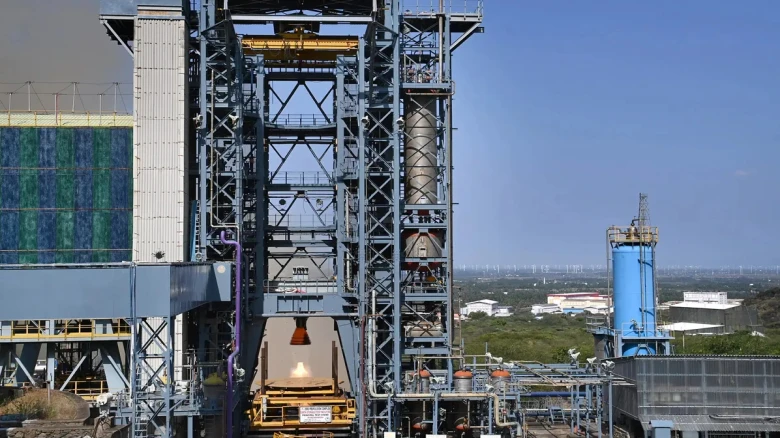Regional

ISRO has successfully completed two more tests as part of efforts to further validate and optimize the performance of the propulsion system that will...
Digital Desk: ISRO has successfully completed two more tests as part of efforts to further validate and optimize the performance of the propulsion system that will be used to launch India's first human spaceflight mission, Gaganyaan.
On Wednesday, "hot tests" on the Gaganyaan Service Module Propulsion System (SMPS) were conducted at the ISRO Propulsion Complex in Mahendragiri, Tamil Nadu.
The Gaganyaan project aims to demonstrate human spaceflight capability by launching a crew of three people into a 400 km orbit for a three-day trip and safely returning them to Earth by landing in Indian sea waters, according to ISRO.
"These tests will further verify and improve the performance of the propulsion system, ensuring its readiness for the upcoming Gaganyaan mission," it said.
"These tests (conducted on July 26) were the second and third hot tests in the Service Module - System Demonstration model (SM-SDM) phase 2 test series. "The first hot test was conducted on July 19, 2023," the Bengaluru-based national space agency stated in a statement.
Also Read : WhatsApp users can now create group while forwarding a message
ISRO said three more hot tests are planned to show de-boosting requirements and off-nominal mission scenarios.
The SMPS was designed and developed by the Liquid Propulsion System Center, located in Bengaluru and Valiamala, Thiruvananthapuram.
The thrusters were tested in both continuous and pulse modes, in accordance with the mission profile, on Wednesday.
The initial hot test, which lasted 723.6 seconds, focused on showing Orbital Module injection and the calibration burn of 100 Newton thrusters and Liquid Apogee Motor (LAM) engines.
"The calibration burn was critical for identifying and isolating any non-functional engines. The LAM engines and reaction control system (RCS) thrusters operated as planned," the statement reads.
"The latter hot test, which lasted 350 seconds, aimed to demonstrate the circularization of the Orbital Module to achieve the final orbit. During this test, the LAM engines ran in continuous mode while the RCS Thrusters fired in pulse mode," it added.
Leave A Comment